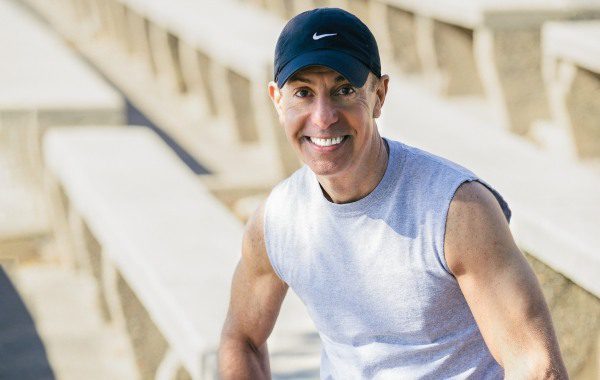 As a health policy expert, Louis Bezich is all too aware that men over the age of 50 are not as healthy as their female counterparts – and they pay the price by fighting more illnesses and then dying younger. An executive with Cooper University Health Care, Bezich has written “Crack the Code: 10 Proven Secrets that Motivate Healthy Behavior and Inspire Fulfillment in Men Over 50” to help his peers approach healthy living in a whole new way. He has selected this excerpt for SJ Magazine readers.
As a health policy expert, Louis Bezich is all too aware that men over the age of 50 are not as healthy as their female counterparts – and they pay the price by fighting more illnesses and then dying younger. An executive with Cooper University Health Care, Bezich has written “Crack the Code: 10 Proven Secrets that Motivate Healthy Behavior and Inspire Fulfillment in Men Over 50” to help his peers approach healthy living in a whole new way. He has selected this excerpt for SJ Magazine readers.
Alan does Yoga and enjoys healthy meals with his wife. David runs 5K races with his daughter. Vijay walks the halls of a shopping mall. Jay enjoys eating salmon dinners with his friend. Carmen regularly walks the high school track, splitting time between a buddy and his wife. Bob swims at the YMCA, where he watches his granddaughter compete. Day after day, week after week, and year after year, these men live healthy lives. They don’t participate in triathlons or extreme sports. By comparison to the extreme athletes, their routines are rather modest, tailored to their life circumstances. To advance their life’s priorities and leverage the maximum benefit from their time invested, the men frequently fit in their healthy behaviors with their social interests. Consistent and varied, they plan for contingencies and keep active in numerous ways.
What’s extraordinary about the men I interviewed is their shared experiences: all are over 50, all willingly adopted their lifestyle, none received compensation for their activities, and their doctors did not inspire their behavior. Not one attributed their behavior to the shoes they wear or the size of their gym, a pill, dietary supplement, special diet, or exercise equipment. No, they simply love their active lifestyle and the benefits that result from it, including the ability to keep up with the grandchildren, quality time with a spouse or significant other, travel, employment, community activities, etc.
For them, health is a means to an end, and the endgame is the advancement of their life’s priorities, which are always at the top of their minds. In short, these men exhibit what I call Male Cognitive Behavioral Alignment. They maintain conscious awareness between the achievement of their most valued priorities and their health. What I heard from Alan, David, Vijay, Carmen, and Bob, and most of the men I interviewed, echoes the results of my nationwide survey. Men over 50 can indeed lead a healthy lifestyle and sustain healthy behaviors. By studying their lifestyle architecture, men can construct a new model for their health, one fueled by the power of their social relationships.
The Burning Platform for a New Model
Too many men 50 and older live in a perpetual state of irony. They want what’s best for themselves and their families, but their actions suggest otherwise. When shopping for a new car or a vacation, they’ll search endlessly for the best value. Time and effort go into all sorts of priorities, from their grandchildren to their favorite sports team. The last thing they want is to be a burden. They grew up seeing themselves as the providers and guardians of others. Yet, when it comes to the one common denominator with the greatest potential to affect the fulfillment of this aspiration, attending to their health, men ignore the opportunity. Their behavior is inconsistent, as they are seemingly unaware that health is a prerequisite for these goals. The results speak volumes.
In general, men are less healthy than women and have a shorter life expectancy (75 years vs. 80 years for women) (Xu & Borders, 2003). Twice as many men as women die each year from heart attacks, and the rates of other major diseases such as stroke, diabetes, and chronic lung disease are all higher in men (US Department of Health and Human Services). Finally, men visit their doctor for preventative care half as often as women do, and all these differences become more acute as men pass the 50-year mark (Galdas, Cheater & Marshall, 2005).
Priorities: A Source of Motivation?
Can the social, emotional, and personal priorities in a man’s life serve as a source of motivation for healthy living? The men I asked overwhelmingly said, “Yes.” When compared to other possible motivators for healthy behavior, such as a physician’s advice or financial incentives from a health insurer, personal priorities ranked considerably higher with more than three-
quarters of the men I surveyed, indicating that priorities play a major role in providing them motivation. The youngest of the age groups, those 50-59, produced the highest rating for the influence of priorities on healthy behaviors, suggesting that men recognize the importance of these factors early on as they age. Nevertheless, priorities dominated all the age categories, demonstrating the sustainability of priorities as a motivator among these men.
Hope
In a word, what our healthy men have provided through this survey is hope. Hope for the thousands and thousands of American 50+ men who struggle with their health. Unable to latch on and sustain a healthy lifestyle, their unhealthy behavior has put them at risk in a very serious way. The numbers don’t lie. Beyond the very real clinical risks are the social, emotional, and personal risks of not experiencing everything that life has to offer: time with their wives or partners, travel, milestones in the lives of their children and grandchildren, second careers, hobbies, and the like. Hope gives us purpose and it inspires us like no other. The lesson is simple. Your motivation is right in front of you and it can form a pathway to healthy behavior. For some reason, we just don’t see it. With a newfound source of motivation and your behavioral guardrails in place, you’ll dramatically increase the chances that your gym membership won’t lapse, you’ll stick to the diet, and you’ll begin to enjoy your healthy lifestyle, as you see the positive impact on the achievement of your life’s priorities. Follow me. The journey begins.














